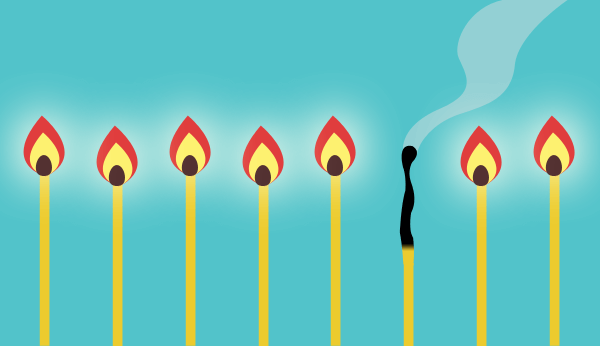The World Health Organisation recognises ‘burnout’ from job stress
This week the World Health Organisation elevated the concept of burnout from a built-in feature of our always-on world to a fully defined “occupational phenomenon” that stems directly from our collective crisis of workplace stress.
It’s a real milestone to have the World Health Organisation for the first time include burnout in its handbook, International Classification of Diseases and Related Health Problems. Burnout, they suggest, is “a syndrome conceptualised as resulting from chronic workplace stress that has not been successfully managed.” It now appears in the ICD-11’s section on problems related to employment or unemployment. According to the handbook it is characterised by 3 key factors:
1. Feelings of energy depletion or exhaustion
2. Increased mental distance from one’s job, or feelings of negativism or cynicism related to one’s job
3. Reduced professional efficiency
Why is this so important?
Many, many people suffer burnout each year. High profile people have begun to speak about this in the last few years. The singer/songwriter, Alanis Morissette, for example, who has spoken publicly about her battle with work addiction and burnout. Arianna Huffington, Founder and CEO of The Huffington Post and Thrive Global, too. She’s talked openly about the time she collapsed from sleep deprivation and exhaustion and broke her collarbone.
And judging by the recent broad media coverage generated by the World Health Organisation’s news, it’s clear that not only is burnout in the zeitgeist, but that people are hungry for solutions. We work for various government departments and it’s no surprise that it’s the most booked talk and workshop we’ve run for them this year. Companies (and employees are desperate to understand the topic better and find ways to avoid burnout before it happens, as well as spot the signs before things get too bad.
The Burnout Club
It’s not a club you want to join but one where membership has grown in alarming numbers. A recent Gallup study of nearly 7,500 full-time employees found that 23% reported feeling burnout at work very often or always, while an additional 44% reported feeling burnt out sometimes. No one is immune. It can hit the overworked and undervalued high-achieving executive, the carer who works around the clock or the everyday employee trying to be the best they can be at work (and at home). There is still shame attached to the idea of burnout, but it’s beginning to dissolve. Our Preventing Burnout session delivered either as a one-hour talk or half day workshop, teaches organisations that this is a topic to be aware of and how to discuss it openly about that staff know the signs in themselves and others and can find ways to prevent it happens. We give people the tools to identify the signs of burnout and give steps to combat it. This is because it’s become clear that burnout is one of the biggest issues of our time.
This is true not only for individuals, but also for the business itself. It’s clear that employee burnout is having a significant impact to the bottom line, including through attrition — and burnt out employees are over 30 percent more likely to leave their jobs. Employee attrition costs businesses an enormous amount of money, with some estimates suggesting the costs can be as high as 1.5x or 2x the departing employee’s annual salary.
Think about it: If employees are experiencing any of the symptoms in the WHO’s new definition of burnout — depletion and exhaustion, negativism and cynicism, reduced professional efficacy — are they going to put in their best performance? Or are they more likely to cut corners or leave?
So, with burnout featuring in so many of the headlines, it’s an opportunity for companies to step up and look after their staff better, as well as looking after the health of their bottom lines. It’s no longer a nice-to-have, it’s actually now a priority.
To find out more, or to book our Preventing Burnout In The Office talk or workshop click here to get in touch.

